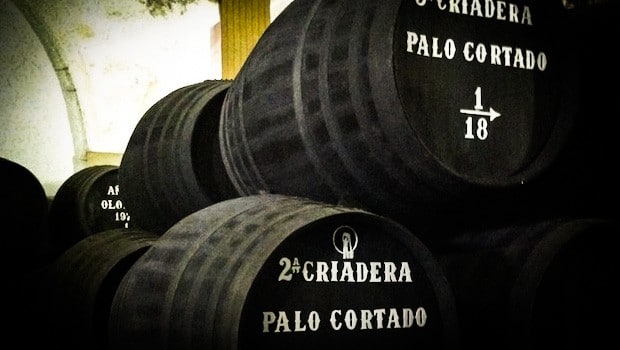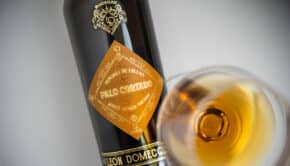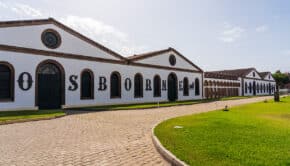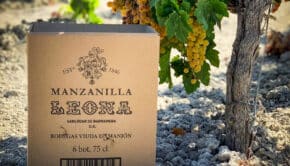Palo Cortado: busting the myth…
The legend of Palo Cortado sherry seems bigger than ever. It is the rarest of all varieties (less than 100.000 bottles sold a year, compared to 60 million bottles overall) – yet it is very popular among aficionados. Today, the documentary film Sherry and the mystery of Palo Cortado is presented at the Berlin Film Festival. It tries to figure out why Palo Cortado has achieved its actual status and it will probably make more people interested in this wonderful style of wine.
Mystery surrounds Palo Cortado because nobody fully understands its origins. Or at least, that is what bodegas are telling us: Palo Cortado is a wine that “occurs”, rather by accident – you can’t actively produce it. On top of this, you frequently hear that it’s an endangered species. Some claim it will be extinct at some point because it is becoming so popular and production is so limited. Luckily this seems exaggerated. Let’s take a moment and try to bust a few of the myths surrounding Palo Cortado.
The mystery starts with the definition
It is the cellarmaster who decides to put the label Palo Cortado on a wine
The rules of the D.O. Jerez-Xérès-Sherry state that a Palo Cortado is a wine that combines the finesse of an Amontillado on the nose, with the structure and body of an Oloroso in the mouth. Unlike the definition of other styles, which include technical requirements, this is merely an aromatic description. It doesn’t say anything about production methods. Moreover, the required qualities are quite subjective and prone to discussion.
This is exactly why some wines have been labeled Oloroso at some point, while the same wine was marketed as Palo Cortado later. See Williams & Humbert’s Dos Cortados or González Byass’ Apostoles for example. The innate subjectivity also explains why some añadas by González Byass are named Oloroso and other vintages are Palo Cortado. Mint that technically all these vintages are produced in the same way.
González Byass found the first reference to a ‘Palo Cortado’ in their archives of 1863, in the same register as the Olorosos Finos. It was noted as an “accident” of minor importance at the time.
How is Palo Cortado born?
The classic way of ‘letting a Palo Cortado occur’ is to create a Fino and just wait. Fino is made from the finest sobretables (base wines) which will naturally develop a layer of flor. However when you have enough barrels of Fino, some will start to behave differently after some time. We’ll look into the reasons for this later, for now we’ll just notice that the flor will simply die sooner than expected in some barrels.
The nose of this kind of ‘rejected Fino’ will retain the clean, tangy influence of flor on the nose. However its body will gradually become heavier due to slow oxidation. When this is being noticed in the bodega, the wine will be fortified further (to approximately 17°) and a Palo Cortado is born. This is the most ‘natural’ method, or the ‘historical’ method if you like.

Although most producers will tell you this is still how they do it, the process above is not very common nowadays. This is mostly because winemaking processes have improved greatly. Producers have a better understanding than they sometimes admit. Compared to the old days, there is far less deviation in fermentation processes and the conditions in bodegas are better monitored.
Palo Cortado as a light Oloroso
Sometimes a Palo Cortado is not a deviation of a Fino barrel. It can also start from a cask of Oloroso, which didn’t have a layer of flor to start from, but again which started from the finest base wines. This is usually what happens in añada barrels. After many years, these wines can show such an elegant, light nose that it is classified as Palo Cortado. Bodegas like Gonzalez Byass started to investigate why these specific barrels turned into Palo Cortado. From that they started to demystify the underlying process.
Historic Palo Cortado production
Let’s focus on the historical Fino-based Palo Cortado again. Multiple ideas have been given to explain why some casks unexpectedly lost their layer of flor. The most important are different grape varieties and peculiarities of the barrel (especially during fermentation). Also variations in the composition of the flor can impart unexpected effects.
Some of the key elements in this mystery are malic acid and lactic acid. Malic acid is found in nearly every type of fruit but is most often associated with apples (a flavour that is quite common in Fino). The levels of malic acid in grapes are at their peak just before veraison, the onset of ripening. As the ripening progresses, malic acid disappears through respiration. During the fermentation process, malic acid can be converted into the softer lactic acid by bacteria present in wooden barrels.
This is called malolactic fermentation. This process causes molecules called lactones and ketones that are perceived as milky / buttery aromas and a creamy texture. Indeed different studies indicated that Palo Cortado soleras show significantly higher levels of lactones and ketones than soleras of other types. These molecules are also playing a role in the specific texture of Olorosos that are named Pata de Gallina.
Grapes, malic acid and other elements
So let’s say we want to stimulate a wine into this process, to get a higher chance of Palo Cortado…
Selecting specific grape varieties would be one way to get more malic acid. Nowadays Palomino Fino is the prescribed grape for sherry production. However this was not always the case, with up to 250 varieties being used in the 19th century. The names include Perruno / Zalema, Mantúo Pilas, Beba and Cañocazo. Most sherry wines were multivarietal wines until fairly recently. Some of these (often later ripening) grapes have a more rustic character and will result in a thicker wine, even when matured under flor.
Enologists like Ramiro Ibáñez are experimenting with ancient grapes again and his Encrucijado 2012 is a Palo Cortado which only contains 50% Palomino. The newer Encrucijado 2014 only contains 20% Palomino. In fact some ancient grapes are now allowed again.
Grapes can be picked earlier, so that they have lost less malic acid. Nowadays harvesting can be done in a couple of days, at the ‘perfect’ moment, but before the industrialization harvesting took up to six weeks and picking some grapes too soon would have been inevitable. It’s plausible that in the old days Palo Cortado would have occured more when using ‘early’ grape juice.
Grapes that grow towards the inner side, the centre of the vine, also contain more malic acid as they are in the shade and there is less transpiration. This is another element that was actively pursued in the Palo Cortado Encrucijado.
Also the type of soil defines the way grapes develop, making the vine work work harder and influencing acidity, so it’s safe to say certain pagos have a higher chance of producing Palo Cortado.
Glycerol and asoleo
Another very important factor is the fermentation process, in combination with asoleo (the sunning of the grapes). While this is nowadays only done for sweet sherries (Moscatel and Pedro XIménez), in the past even Palomino grapes for Fino would have been subjected to a short time in the sun., concentrating the sugars. If the grapes were left outside a bit too long, or if the barrels with fermenting wine would have been left outside in the sun a bit too long, this would lead to a higher alcohol level and a less favourable environment for the flor. Fluctuations and higher temperatures cause the flor to die.
Fluctuations of temperature during the fermentation can also cause a greater amount of glycerol, which gives wines the creamy, thicker body required for Palo Cortado. The microbiological culture of a barrel is extremely important here, and after some years a bodega will know exactly which barrels contain the right bacteria to stimulate Palo Cortado.
This explains why one barrel can become Palo Cortado while the other one stays Fino, even when they were filled with same base wine. It’s hard to force bacteria into casks so you will need a bit of luck after all, but experience will tell bodegas which barrels are suitable for Palo Cortado.

The Palo Cortado solera at Bodegas Tradicion
Modern Palo Cortado production: a light Oloroso
Bodegas have developed their own reliable way to produce Palo Cortado
Nowadays the common method to create Palo Cortado is to select the most delicate musts, made from the early ‘free run juice’ (without mechanical pressing), preferably the juice with higher malic acid levels. These musts are normally predestined for Fino production, but if you fortify them to 17-18° along the way, the flor will be actively killed and the wine will start ageing oxidatively while remaining light and delicate.
In a way you’re forcing a Fino-style base wine to age oxidatively like an Oloroso (which is usually produced from second press juices). In a good cask (especially one that contained Palo Cortado before), this will definitely get you a Palo Cortado. It comes down to controlling the grape selection and the pressing.
The filling level of the cask can play a role as well: when you fill above the common 4/5th level, the surface of the wine will be much smaller, which leads to less contact with oxygen and less possibility for flor to survive. Hence a more full-bodied wine compared to a classic Fino. La Guita and others are known to have played around with this parameter.
Different selection methods in sherry bodegas
In most bodegas there is still a significant biological period (between 6 months and three years) before the fortification, which helps to get a Palo Cortado character. However some bodegas like Barbadillo say they skip the biological ageing and proceed to oxidative ageing right away. In both cases you’re essentially producing a light style of Oloroso.
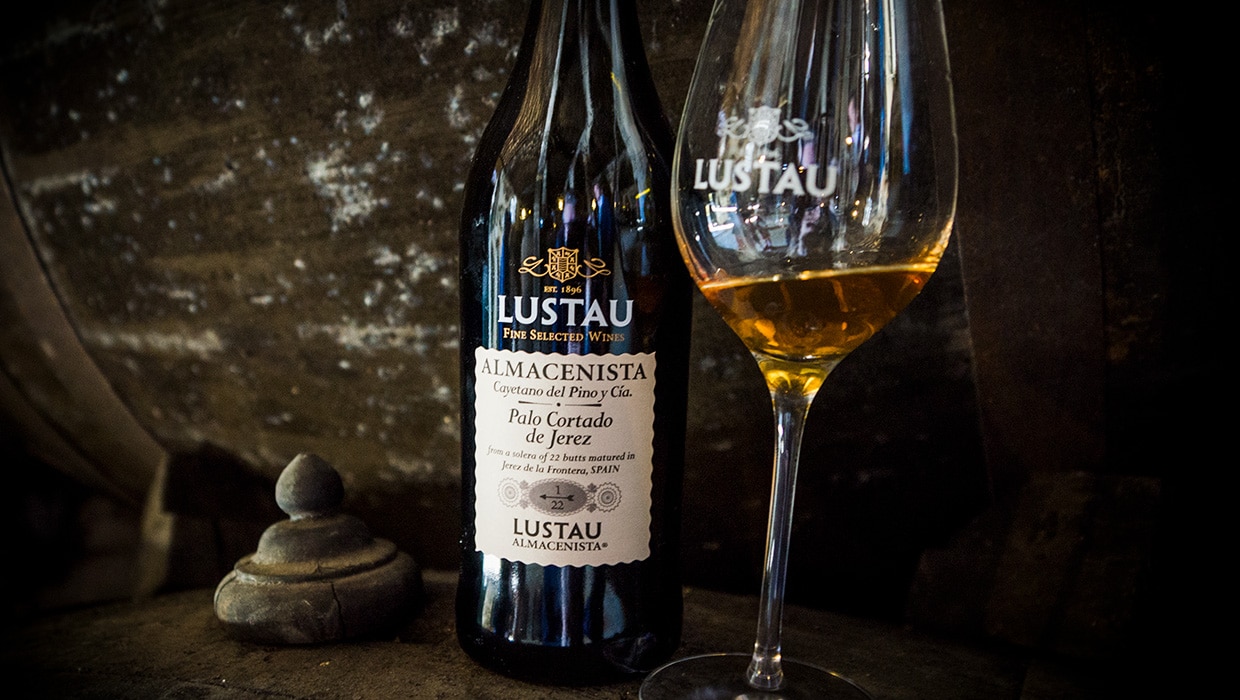
Palo Cortado de Jerez – Cayetano del Pino (Lustau)
Bodegas Valdespino select the most delicate casks from the ninth criadera (the second stage) of their Fino Inocente and Amontillado Tio Diego soleras. They fortify this mixture to around 18° to prevent the growth of flor and add this to the Viejo C.P. solera. There it will complete the oxidative ageing process and gradually turn from Fino / Amontillado to Palo Cortado. González Byass also says it is selecting Fino and Amontillado casks that are set apart and diverted towards Palo Cortado.
You will also find references to Palo Cortado being made by merely blending Amontillado and Oloroso. This causes a hybrid wine that may resemble Palo Cortado – you should really try this yourself if you have both bottles. However it will certainly be less balanced and integrated than the true examples. This was probably done in bars that wanted to sell cheap Palo Cortado. Personally I haven’t come accross any of these dodgy, unbalanced examples. Modern Palo Cortado is quite expensive and the ones I’ve tried certainly seemed authentic.
Conclusion: Palo Cortado is a complex wine
In the end, Palo Cortado may not be a style you can create ad hoc by following a set recipe. Even with modern knowledge, we can indicate a whole range of elements that play a role in the development of this wonderful wine. Some of these elements are difficult to control indeed. Yet it is clear that skilled winemakers can now create authentic Palo Cortado on purpose and get a very high success rate with sustainable quantities.
Has the myth been busted then? Yes, probably. What bodegas are telling us includes a certain dose of romanticism. With monovarietal wines and controlled fermentation, winemaking has become too scientific to keep saying nobody understands the methods behind Palo Cortado.
On the other hand there are still differences between bodegas and they all claim to have perfected their production a little further. Protecting their own method is probably the real reason for staying vague. Moreover mystery is a great marketing technique, so I expect Palo Cortado to remain a mysterious wine forever. The bottom line is that Palo Cortado is an utterly delicious wine, enjoy!
See my reviews of Palo Cortado sherry


